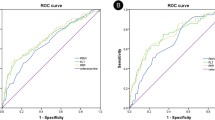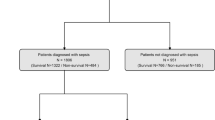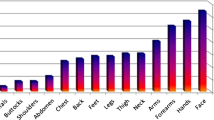Abstract
The predictive value of red blood cell distribution width (RDW) in severely burned patients remains unclear. This study aimed to investigate the potential association between admission RDW and outcomes in patients with severe burns. Data of severely burned patients in the burn center of Changhai Hospital were retrospectively evaluated. The relationship between admission RDW and mortality was analyzed and displayed using the receiver operating characteristic curve, Kaplan–Meier curve, Cox proportional hazards regression, and the nomogram method. A total of 342 patients were identified according to the filter criteria. The 30-day mortality was 12.9%, and the mortality rates in 7 days and 90 days were 2.9% and 16.7%, respectively. Patients with high admission RDW value were more likely to die than those with low RDW value. Multivariate analysis revealed that higher admission RDW, age, full-thickness burned area, and inhalation injury were independent risk factors with 30-day mortality. The nomogram based on these risk factors was established to predict survival probability in severe burn patients. The C-index of different follow-up times was computed between 0.867 and 0.904, and the nomogram model list fits the data well. Admission RDW played a valuable role in predicting short-term mortality in patients with severe burns. The nomogram containing admission RDW was established to predict mortality, which helps burn care providers identify the patients at higher risk of short-term mortality after severe burns. More attention should be paid to the application of these easy and inexpensive biochemical indicators in the early prediction of disease progression.



Similar content being viewed by others
Data Availability
The datasets generated during and/or analyzed during the current study are available from the corresponding author on reasonable request.
References
Salvagno, G. L., Sanchis-Gomar, F., Picanza, A., et al. (2015). Red blood cell distribution width: A simple parameter with multiple clinical applications [J]. Critical Reviews in Clinical Laboratory Sciences, 52(2), 86–105.
Urrechaga, E., & Hoffmann, J. (2017). Critical appraisal of discriminant formulas for distinguishing thalassemia from iron deficiency in patients with microcytic anemia [J]. Clinical Chemical and Laboratory Medicine, 55(10), 1582–1591.
Pehlivanlar, K. M., Öztuna, F., Abul, Y., et al. (2019). Prognostic value of red cell distribution width and echocardiographic parameters in patients with pulmonary embolism [J]. Advances in Respiratory Medicine, 87(2), 69–76.
Han, Y. Q., Yan, L., Zhang, L., et al. (2019). Red blood cell distribution width provides additional prognostic value beyond severity scores in adult critical illness [J]. Clinica Chimica Acta, 498, 62–67.
Baggen, V., Van Den Bosch, A. E., Van Kimmenade, R. R., et al. (2018). Red cell distribution width in adults with congenital heart disease: A worldwide available and low-cost predictor of cardiovascular events [J]. The International Journal of Cardiology, 260, 60–65.
Goyal, H., Lippi, G., Gjymishka, A., et al. (2017). Prognostic significance of red blood cell distribution width in gastrointestinal disorders [J]. World Journal of Gastroenterology, 23(27), 4879–4891.
Sadaka, F., O’Brien, J., & Prakash, S. (2013). Red cell distribution width and outcome in patients with septic shock [J]. Journal of Intensive Care Medicine, 28(5), 307–313.
Zaets, S. B., Berezina, T. L., Xu, D. Z., et al. (2003). Burn-induced red blood cell deformability and shape changes are modulated by sex hormones [J]. American Journal of Surgery, 186(5), 540–546.
Endoh, Y., Kawakami, M., Orringer, E. P., et al. (1992). Causes and time course of acute hemolysis after burn injury in the rat [J]. Journal of Burn Care and Rehabilitation, 13(2 Pt 1), 203–209.
Kim, J., Kim, K., Lee, J. H., et al. (2012). Red blood cell distribution width as an independent predictor of all-cause mortality in out of hospital cardiac arrest [J]. Resuscitation, 83(10), 1248–1252.
Pierce, C. N., & Larson, D. F. (2005). Inflammatory cytokine inhibition of erythropoiesis in patients implanted with a mechanical circulatory assist device [J]. Perfusion, 20(2), 83–90.
Gunduz, M., Ciftci, I., Yasti, A. C., et al. (2020). Red cell distribution width and neutrophil-to-lymphocyte ratio as a predictive factor in treatment of pediatric patients with burns [J]. International Journal of Burns and Trauma, 10(4), 101–106.
Qiu, L., Chen, C., Li, S. J., et al. (2017). Prognostic values of red blood cell distribution width, platelet count, and red cell distribution width to platelet ratio for severe burn injury [J]. Scientific Reports, 7(1), 13720.
Moore, R. A., Waheed, A., & Burns, B. (2022). Rule of Nines. In StatPearls. StatPearls Publishing.
Vivó, C., Galeiras, R., & Del, C. M. (2016). Initial evaluation and management of the critical burn patient [J]. Medicina Intensiva, 40(1), 49–59.
Hajian-Tilaki, K. (2018). The choice of methods in determining the optimal cut-off value for quantitative diagnostic test evaluation [J]. Statistical Methods in Medical Research, 27(8), 2374–2383.
Weuve, J., de Mendes, L. C., Bennett, D. A., et al. (2014). The red cell distribution width and anemia in association with prevalent dementia [J]. Alzheimer Disease & Associated, 28(2), 99–105.
Wu, G., Zhuang, M., Jiang, Y., et al. (2019). Can systemic inflammatory response syndrome score at admission predict clinical outcome in patients with severe burns?[J]. Burns, 45(4), 860–868.
Greenhalgh, D. G., Saffle, J. R., Holmes, J. T., et al. (2007). American Burn Association consensus conference to define sepsis and infection in burns [J]. Journal of Burn Care and Research, 28(6), 776–790.
Ozisler, C., & Sandikci, S. C. (2020). Evaluation of red blood cell distribution width in patients with psoriatic arthritis [J]. The Egyptian Rheumatologist, 42(4), 309–312.
Friedman, J. S., Lopez, M. F., Fleming, M. D., et al. (2004). SOD2-deficiency anemia: protein oxidation and altered protein expression reveal targets of damage, stress response, and antioxidant responsiveness [J]. Blood, 104(8), 2565–2573.
Li, N., Zhou, H., & Tang, Q. (2017). Red blood cell distribution width: A novel predictive indicator for cardiovascular and cerebrovascular diseases. Disease Markers, 2017, 1–23.
Patel, K. V., Mohanty, J. G., Kanapuru, B., et al. (2013). Association of the red cell distribution width with red blood cell deformability [J]. Advances in Experimental Medicine and Biology, 765, 211–216.
Wang, Z., Chen, X., & He, S. (2021). Prognostic value of red blood cell distribution width for mortality in patients with hypertrophic cardiomyopathy [J]. Clinical Biochemistry, 96, 19–25.
Acknowledgements
We would acknowledge the whole maintenance staff of electronic medical record system.
Funding
This work was supported by the foundation of Shanghai hospital development center (SHDC2020CR4100).
Author information
Authors and Affiliations
Contributions
All authors have got final approval of the manuscript and agreed to be accountable for all aspects of the work.
Research scheme design: Guosheng Wu.
Data collection: Honghao Lai, Zhuhong Cai, Shengyong Wu, Wei Zhang, Jiali Chen.
Data Analyze: Honghao Lai, Zhuhong Cai, Shengyong Wu.
Article written: Guosheng Wu, Honghao Lai, Zhuhong Cai.
Manuscript proofread: Guosheng Wu.
Manuscript revised: Guosheng Wu.
Corresponding author
Ethics declarations
Research Ethics and Informed Consent
This retrospective study was approved by the Medical Ethics Committee of Changhai Hospital of Naval Medical University. At the same time, our study did not affect the normal treatment of patients. All the patients’ privacy information would be kept confidential.
Conflict of Interest
The authors declare no competing interests.
Additional information
Publisher's Note
Springer Nature remains neutral with regard to jurisdictional claims in published maps and institutional affiliations.
Rights and permissions
Springer Nature or its licensor (e.g. a society or other partner) holds exclusive rights to this article under a publishing agreement with the author(s) or other rightsholder(s); author self-archiving of the accepted manuscript version of this article is solely governed by the terms of such publishing agreement and applicable law.
About this article
Cite this article
Lai, H., Cai, Z., Wu, S. et al. An Increase in Admission RDW Value Is Associated with Excess Short-Term Mortality Rates in Patients with Severe Burns. Appl Biochem Biotechnol 195, 3217–3228 (2023). https://doi.org/10.1007/s12010-022-04302-y
Accepted:
Published:
Issue Date:
DOI: https://doi.org/10.1007/s12010-022-04302-y




